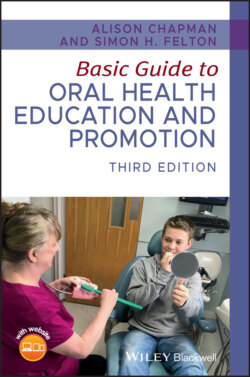Читать книгу Basic Guide to Oral Health Education and Promotion - Alison Chapman - Страница 107
Oral hygiene aids for peri‐implant mucositis and peri‐implantitis
ОглавлениеWhen advising patients on oral hygiene techniques, the depth of the sulcus must be taken into consideration.
Figure 4.8 Peri‐implantitis.
Source: Alison Chapman.
Figure 4.9 Peri‐implantitis, surgically exposed.
Source: Alison Chapman.
Figure 4.10 A single tufted or interspace brush, fixed lower.
Source: Mary Mowbray. Reproduced with permission of Mary Mowbray.
Figure 4.11 Floss threader on a fixed bridge.
Source: Mary Mowbray. Reproduced with permission of Mary Mowbray.
Figure 4.12 (a,b) Oral‐B® SuperFloss™ with a fixed mix bridge (a) and fixed bridge (b).
Source: Mary Mowbray. Reproduced with permission of Mary Mowbray.
Figure 4.13 Interdental brush.
Source: Mary Mowbray. Reproduced with permission of Mary Mowbray.
Oral hygiene aids include:
An interspace brush (Figure 4.10) – this is used to clean subgingivally by flexing the tip and gently stroking it around the implant in the sulcus/gingival crevice.
Dental floss, tape, floss threaders (Figure 4.11), Oral‐B® SuperFloss™ (Figure 4.12 a,b), Tepe® implant floss – can be wrapped around the implant restoration and eased down into the sulcus. It should be wiped back and forth, or threaded under the bridge or denture, and moved along it to remove debris from underneath.
Interdental brushes used in the same way as with a natural tooth (Figure 4.13).
TePe® Implant Care™ brush – which is angulated to access the gingival sulcus lingually and palatally. It can be adjusted by warming in hot water, bending and then cooling in cold water.
